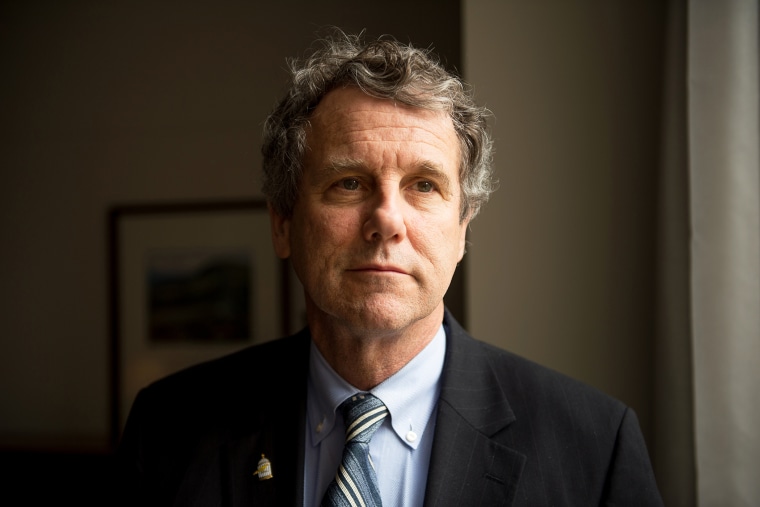As Democratic presidential candidates go, Sen. Sherrod Brown brought a lot to the table. He has many years of experience fighting successfully for progressive causes; the senator has a proven track record of earning the support of swing voters without compromising on his principles; Brown appeals to multiple Democratic constituencies; and he's popular in the Rust Belt, where the party came up critically short in the 2016 election.
And did I mention that he's from Ohio -- and that the candidate who carried the Buckeye State went on to win the presidency in 14 of the last 14 election cycles?
It was very easy to imagine the Democratic senator becoming a top-tier contender, and perhaps even the 2020 nominee. But in the end, Brown decided he didn't want the job.
Sen. Sherrod Brown announced Thursday he will not run for president.The surprise announcement comes after a two-month tour through early voting states, which many believed was the building blocks of a presidential campaign."I will keep calling out Donald Trump and his phony populism. I will keep fighting for all workers across the country. And I will do everything I can to elect a Democratic President and a Democratic Senate in 2020. The best place for me to make that fight is in the United States Senate," Brown said in a statement.
To my mind, this is the biggest surprise of the 2020 cycle to date. For other prospective candidates who ultimately didn't run, there's a simple explanation: they couldn't line up supporters, they couldn't put together a competitive staff and operation, they were significantly out of step with the party's base and orthodoxy, etc.
Brown, however, is in an entirely different category. For all intents and purposes, he was running, he looked like he'd seriously compete, but he stepped aside anyway.
Ordinarily, when a prominent candidate exits the stage, one of the first questions is who benefits from his or her departure. In Brown's case, that's a little tricky: he wasn't an official candidate, and in national polling, the senator wasn't especially well known and didn't have significant support.
That said, for those in the party who were in the Ohioan's corner, I can imagine those interested in a Midwestern candidate gravitating to Sen. Amy Klobuchar (D-Minn.), those preoccupied with "electability" giving a fresh look to former Vice President Joe Biden or former Rep. Beto O'Rourke (D-Texas); and those who like Brown's support for labor unions looking anew at Sen. Bernie Sanders (I-Vt.).
As for the historical context, many observers assumed the Democrats' 2020 field would be the largest in American history, and that's no longer a sure thing. The largest Democratic fields were 15 candidates in 1972 and 16 candidates in 1976, while the largest Republican field was 17 candidates in 2016. As things stand, the current Democratic field is 12 candidates -- Elizabeth Warren, Kirsten Gillibrand, Kamala Harris, Cory Booker, Julian Castro, Amy Klobuchar, Bernie Sanders, Jay Inslee, John Hickenlooper, Pete Buttigieg, John Delaney, and Tulsi Gabbard -- with a few other possible contenders still eyeing the contest.
As for those who considered the race before bowing out, that list is nearly as long, and now includes Sherrod Brown, Michael Bloomberg, Jeff Merkley, Eric Holder, Eric Garcetti, Deval Patrick, Martin O'Malley, Tom Steyer, and Bob Casey.
